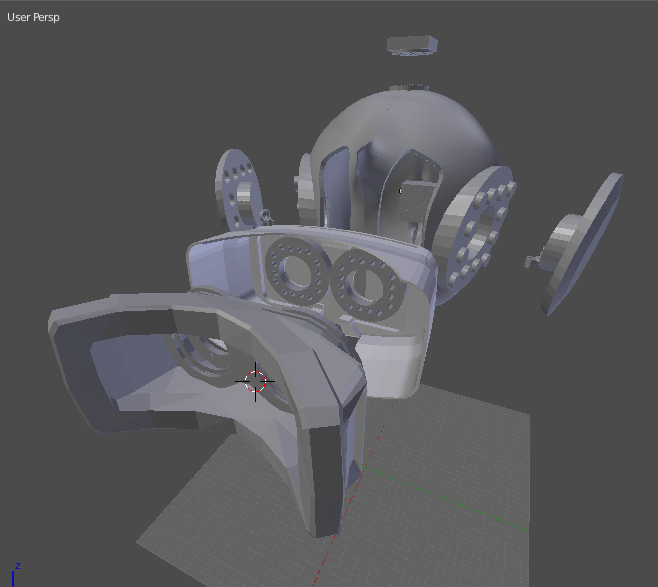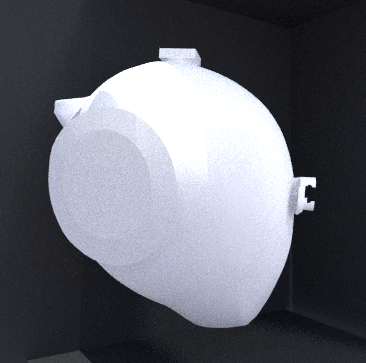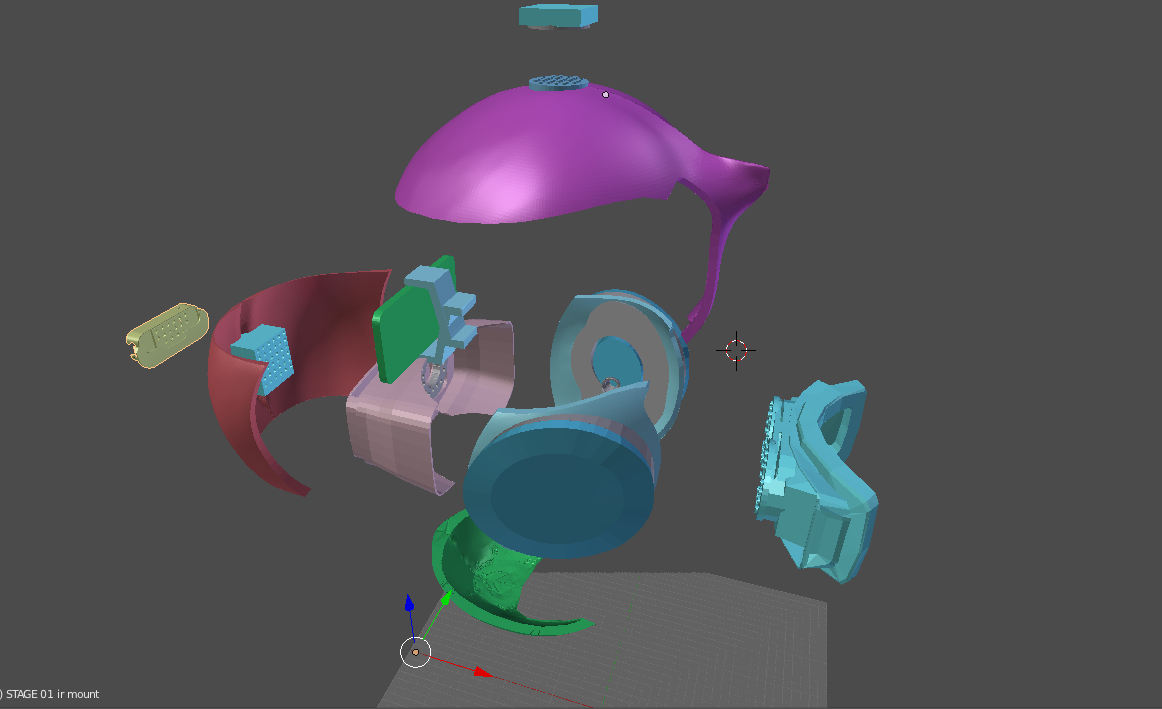Version 2's focus was mainly on the aesthetic design of the HMD, along with getting the proper dimensions in place for it to actually function.

My design philosophy at the time was, VR is not a passive experience between a user and their hardware, so lets embrace that.
Standard HMD designs always reminded me of a tissue box strapped to your face. A design that was born out of the necessity to fit base components into a minimal sized housing. This can be great and functional, but I wanted to do something a bit more bold and fun.
Having some surface area to work with would open up creative possibilities in both aesthetics and hardware configurations, so I started playing with a full helmet design.
 The initial renderings were ultimately not the right direction, but it did set the course for differentiating the design from what was currently out there.
The initial renderings were ultimately not the right direction, but it did set the course for differentiating the design from what was currently out there.
This design did not address a few key objectives. Most importantly, it felt more like a fixed design that could be broken down into pieces, rather than a truly modular design that could be transformed into various configurations while supporting a variety of hardware.

As I made my markups on the V2 design, I realized it was necessary to go back to the drawing board in order to get back on track with the functionality objectives. This design just couldn't support all the different use scenarios I had detailed out, so that would be the focus of V3.

 Brian Ferrara
Brian Ferrara
Discussions
Become a Hackaday.io Member
Create an account to leave a comment. Already have an account? Log In.